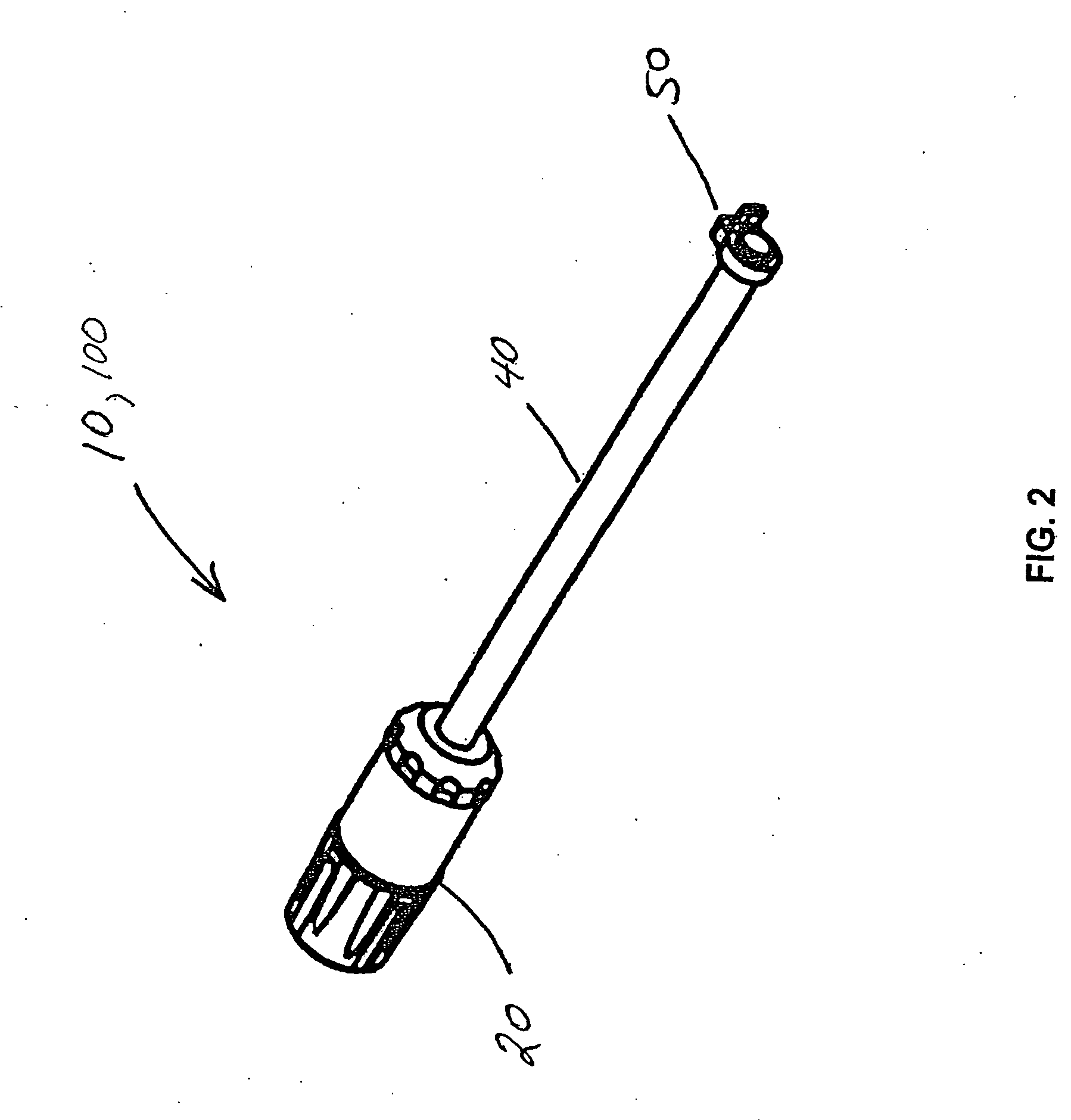Instrument guide and implant holder
a technology of instruments and holder, which is applied in the field of medical instruments, can solve the problems of increased difficulty in maneuvering, increased difficulty in operating room, and increased difficulty for surgeons to maneuver, so as to facilitate the insertion of variable angle bone screws and maintain visibility in the operating region.
- Summary
- Abstract
- Description
- Claims
- Application Information
AI Technical Summary
Benefits of technology
Problems solved by technology
Method used
Image
Examples
Embodiment Construction
[0082] While the present invention will be described more fully hereinafter with reference to the accompanying drawings, in which particular embodiments and methods are shown, it is to be understood from the outset that persons of ordinary skill in the art may modify the invention herein described while achieving the functions and results of this invention. Accordingly, the descriptions which follow are to be understood as illustrative and exemplary of specific embodiments within the broad scope of the present invention and not as limiting the scope of the invention. For instance, words such as “bone implant”, are used in the general sense and can include bone plates, bone cages, and any other implantable device. Similarly, for ease of description, the following description refers to bone screws. It should be understood, however, that any fastener that is suitable for implantable devices may be substituted for the screw that is described herein, to the extent that such substitution ...
PUM
 Login to View More
Login to View More Abstract
Description
Claims
Application Information
 Login to View More
Login to View More - R&D
- Intellectual Property
- Life Sciences
- Materials
- Tech Scout
- Unparalleled Data Quality
- Higher Quality Content
- 60% Fewer Hallucinations
Browse by: Latest US Patents, China's latest patents, Technical Efficacy Thesaurus, Application Domain, Technology Topic, Popular Technical Reports.
© 2025 PatSnap. All rights reserved.Legal|Privacy policy|Modern Slavery Act Transparency Statement|Sitemap|About US| Contact US: help@patsnap.com



